How to Choose the Best Seating for Your Restaurant
Restaurant seating isn’t one-size-fits-all. With so many styles, designs, and materials available, it can feel overwhelming to narrow down the options. From restaurant-grade chairs made for high-traffic environments to designer seating models that elevate the dining experience, it’s important to consider not just the aesthetics but also the durability and comfort of the seating.
Choosing the right seating for your restaurant is more than just picking a style that looks good. The chairs you select play a crucial role in defining the atmosphere, comfort, and overall experience for your guests. Whether you’re drawn to sleek metal finishes, rustic wood tones, or durable outdoor options, your choice of seating can directly impact customer satisfaction and even your restaurant’s sales. This Restaurant Chairs Buying Guide will walk you through everything you need to know when purchasing commercial seating, helping you make the best investment for your establishment. This comprehensive guide will help you make informed choices for your dining space, whether you’re outfitting a small café, a bustling bistro, or a high-end dining establishment.
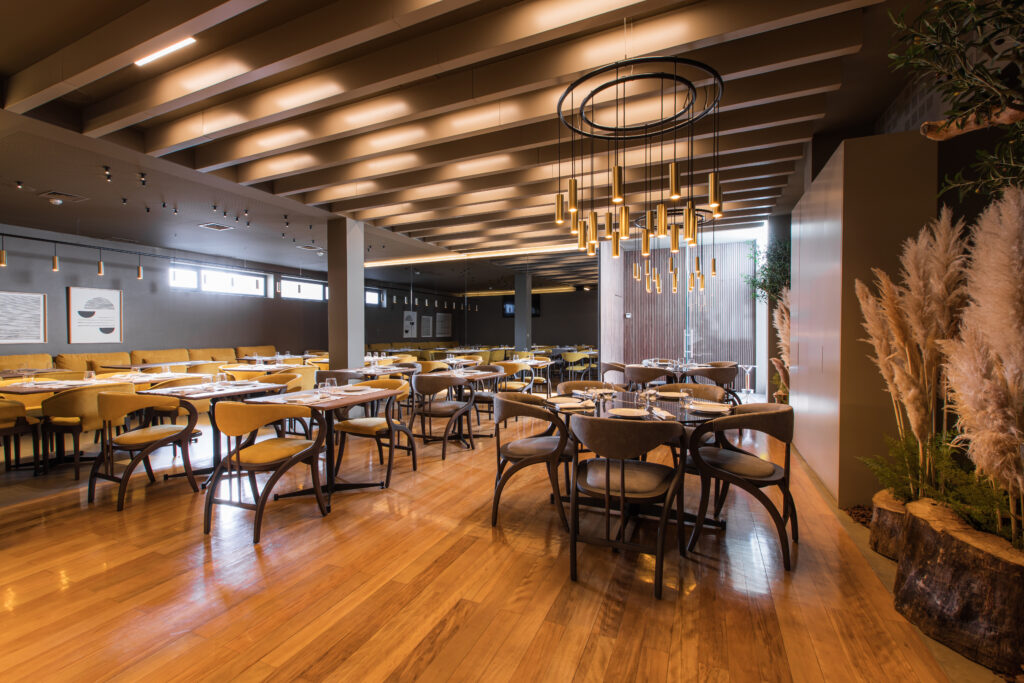
Understanding Restaurant Chairs
Why the Right Chairs Matter for Your Restaurant
When it comes to commercial restaurant chairs, it’s not just about function – it’s about the message you want to convey to your customers. The right chair can invite guests to linger longer, encourage repeat business, and even subtly influence their dining choices. Think about how uncomfortable seating could affect the dining experience. An uncomfortable chair can make customers feel rushed or unhappy, while a well-designed, ergonomic seat invites them to relax and enjoy their meal.
Furthermore, restaurant-grade chairs are a visual cue for your brand. The material, color, and style of your seating should reflect the overall theme of your establishment. For example, a fine dining restaurant might choose plush upholstered seating with elegant wooden frames, while a casual bistro could benefit from minimalist metal or industrial designs.
In addition, investing in high-quality commercial-grade chairs ensures that your seating holds up under heavy use. Unlike residential furniture, which is designed for occasional use, commercial restaurant chairs are built to withstand the wear and tear of daily customers. They are tested for strength, stability, and comfort, ensuring they meet industry standards for safety and durability.
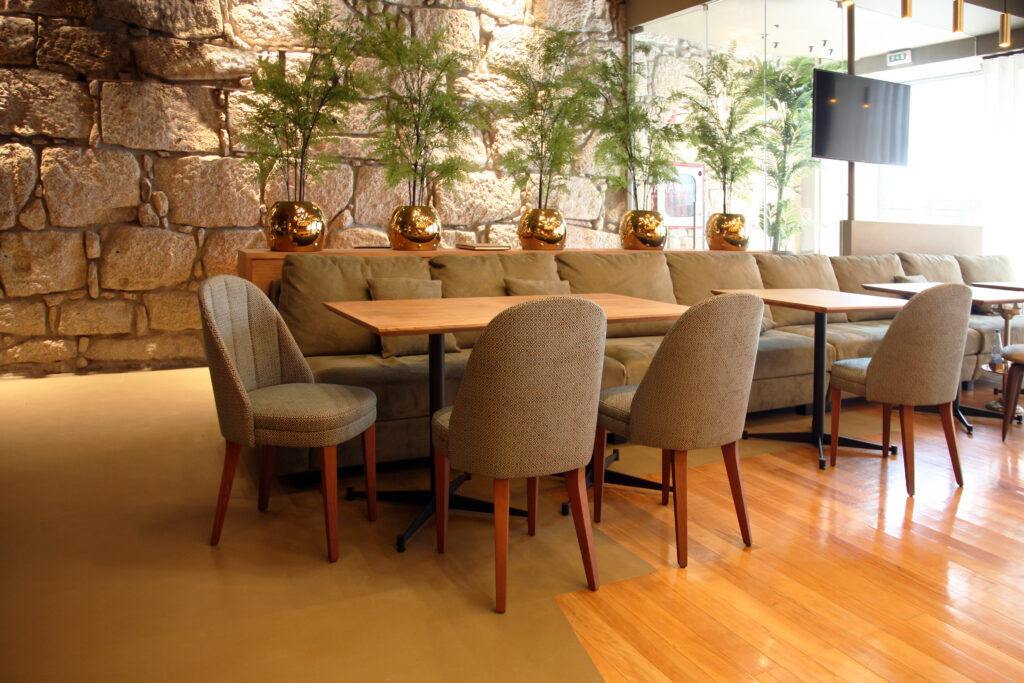
Key Factors to Consider When Buying Restaurant Chairs
1. Material: Metal, Wood, or Upholstered?
One of the first decisions you’ll make is what material to choose for your restaurant chairs. Each material offers its own advantages and can set the tone for your space.
Metal Chairs: Known for their durability, metal chairs are ideal for high-traffic environments. They are typically made from stainless steel, aluminum, or iron, and are often treated with a powder-coated finish for added resilience. Metal chairs are also fire-resistant and easy to clean, making them a practical choice for busy establishments. Additionally, metal chairs offer a sleek, modern look that can complement both contemporary and industrial settings.
Wooden Chairs: Wood provides a warm, inviting aesthetic and is a popular choice for commercial restaurant chairs in both casual and upscale settings. Wooden chairs are typically crafted from hardwoods like oak, beech, or ash, offering long-lasting durability. They can also be customized with various stains and finishes to match the interior of your restaurant. Wood chairs, while elegant, require regular maintenance to ensure they stay in top condition.
Upholstered Chairs: For ultimate comfort, upholstered seating is the way to go. These chairs can be designed with plush cushions covered in vinyl, fabric, or leather, offering a luxurious feel for fine dining or lounge areas. Upholstered chairs are perfect for creating a high-end atmosphere but can require more maintenance to keep clean, especially in busy environments.
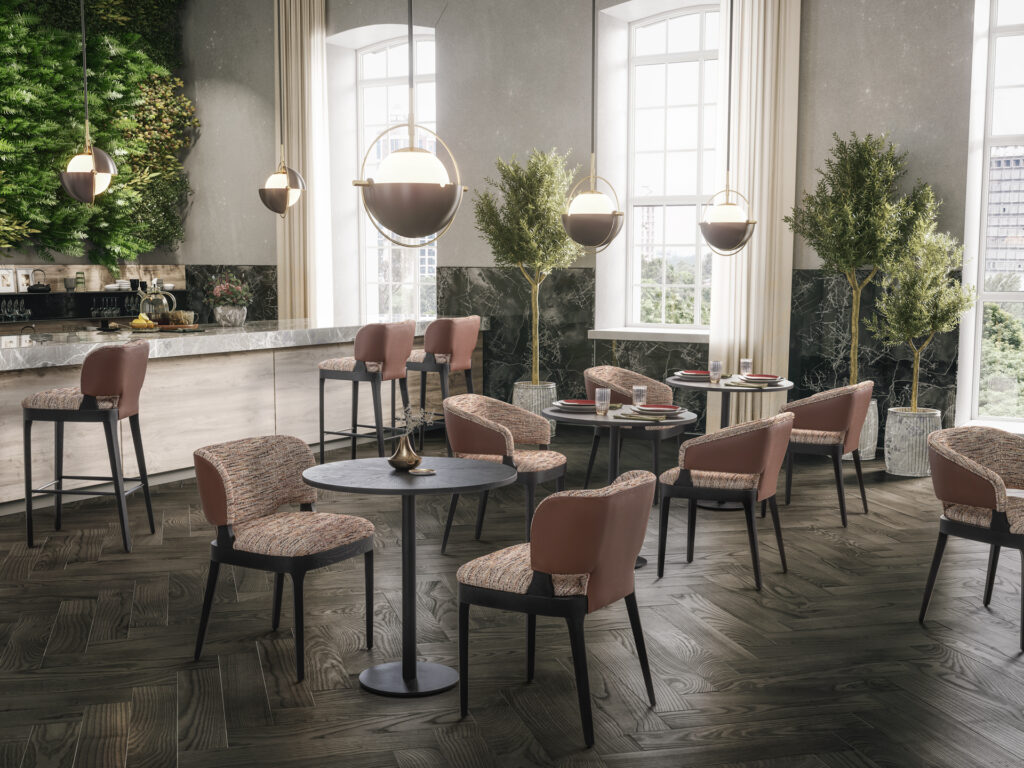
2. Durability: Why Commercial-Grade Furniture Matters
One key distinction between residential and commercial-grade chairs is durability. Commercial restaurant chairs are designed specifically for the demands of a restaurant environment, meaning they undergo extensive testing to ensure they can withstand heavy use. Residential furniture might look attractive and be more affordable upfront, but it often lacks the sturdiness needed for daily commercial use.
Commercial furniture is also subject to rigorous safety and stability standards, which is crucial for protecting your customers from accidents and ensuring that your seating investment lasts for years. In fact, most restaurant commercial chairs come with warranties that reflect their longer lifespan and durability, giving you peace of mind.
3. Comfort: Keeping Your Guests Happy
Comfort is paramount when selecting a chair for your restaurant. Whether your patrons are dining for an hour or just enjoying a quick bite, their seating experience should enhance their overall visit. Ergonomics play a huge role in this.
Chairs with proper back support, the right seat depth, and a comfortable cushion can make the difference between guests who linger and enjoy their meal versus those who feel uncomfortable and rushed.
Keep in mind the type of dining experience you’re offering. For fine dining, upholstered seating that supports longer stays may be ideal, while for fast-casual eateries, simpler, yet still comfortable, chairs may suffice. Also, consider armrests and cushioned seats for added comfort in certain settings.
4. Style: Matching Your Brand and Atmosphere
When you’re browsing restaurant-grade chairs, you’ll find an incredible variety of styles. From classic wooden chairs to sleek, modern metal designs, choosing the right style is about more than just aesthetics – it’s about reinforcing your brand’s identity.
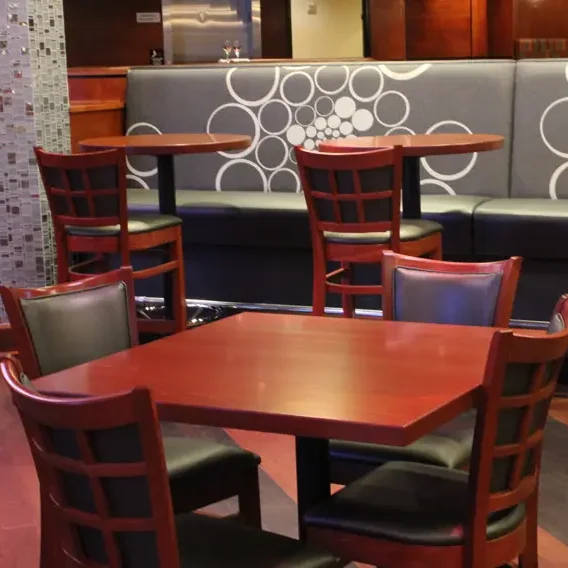
Classic Chairs: Perfect for restaurants that want to evoke a sense of tradition and timelessness. These chairs often feature intricate woodwork, padded seats, and rich finishes that create an upscale look.
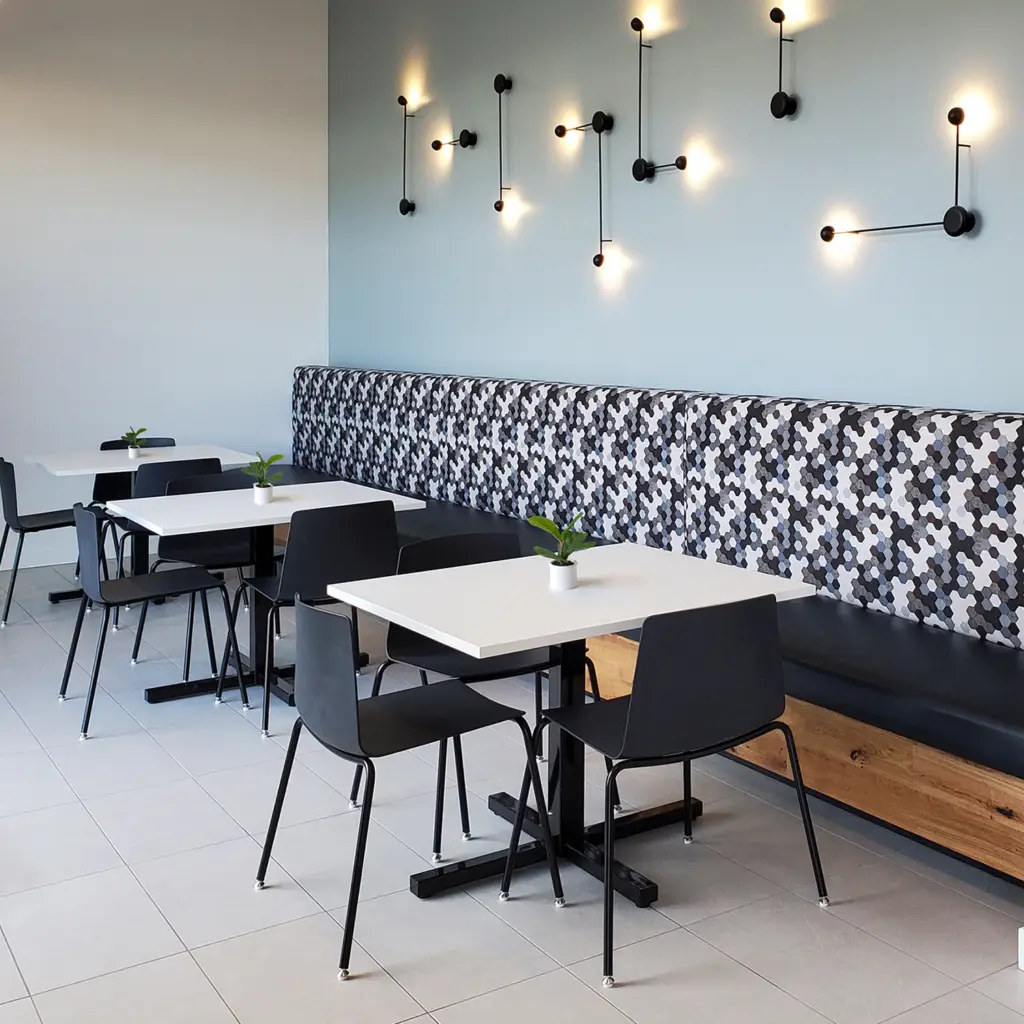
Modern Chairs: With clean lines, minimalist designs, and often made from metal or molded plastic, modern chairs are great for contemporary or casual spaces. They pair well with open, industrial designs, or restaurants that want a sleek, uncluttered look.
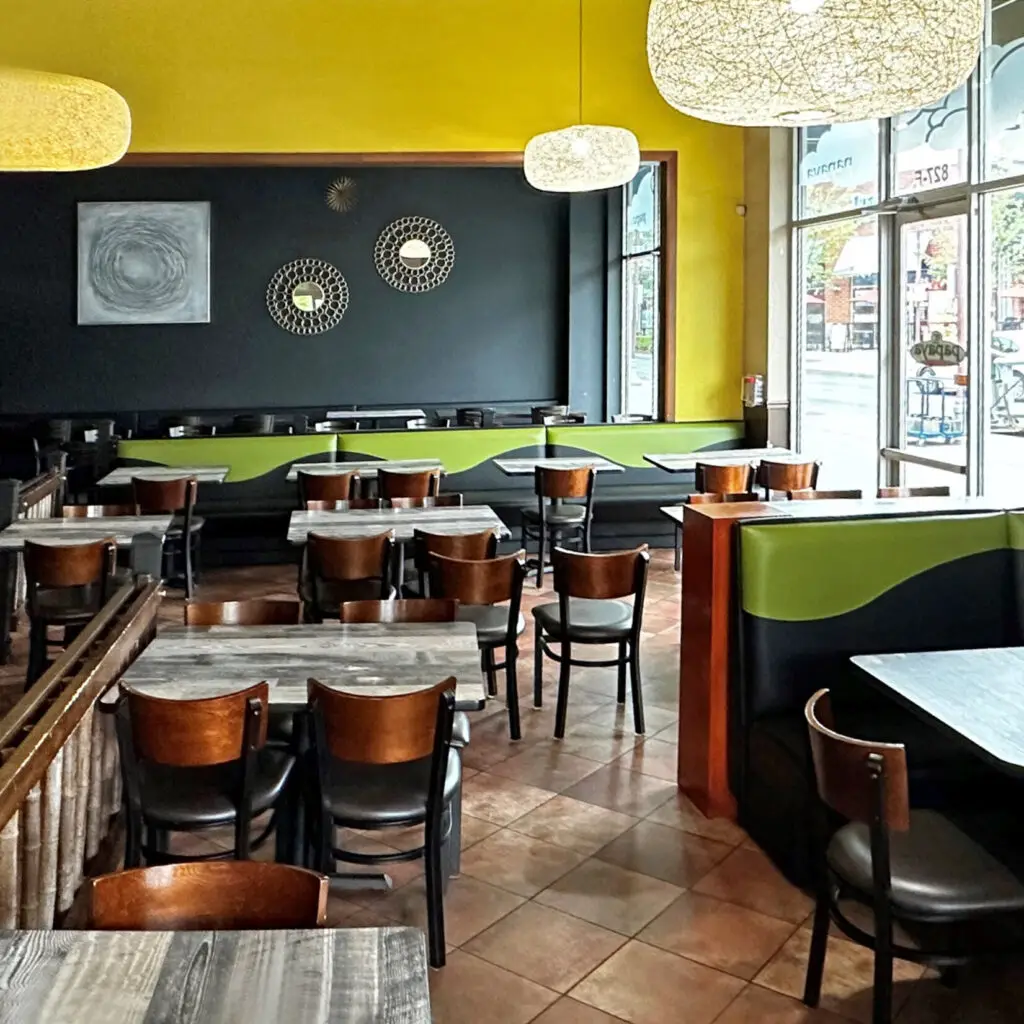
Industrial Chairs: A staple in trendy cafes and urban eateries, industrial-style commercial restaurant chairs typically feature raw materials like metal and wood, often with a distressed finish. They offer a rugged, no-nonsense look that appeals to modern sensibilities.
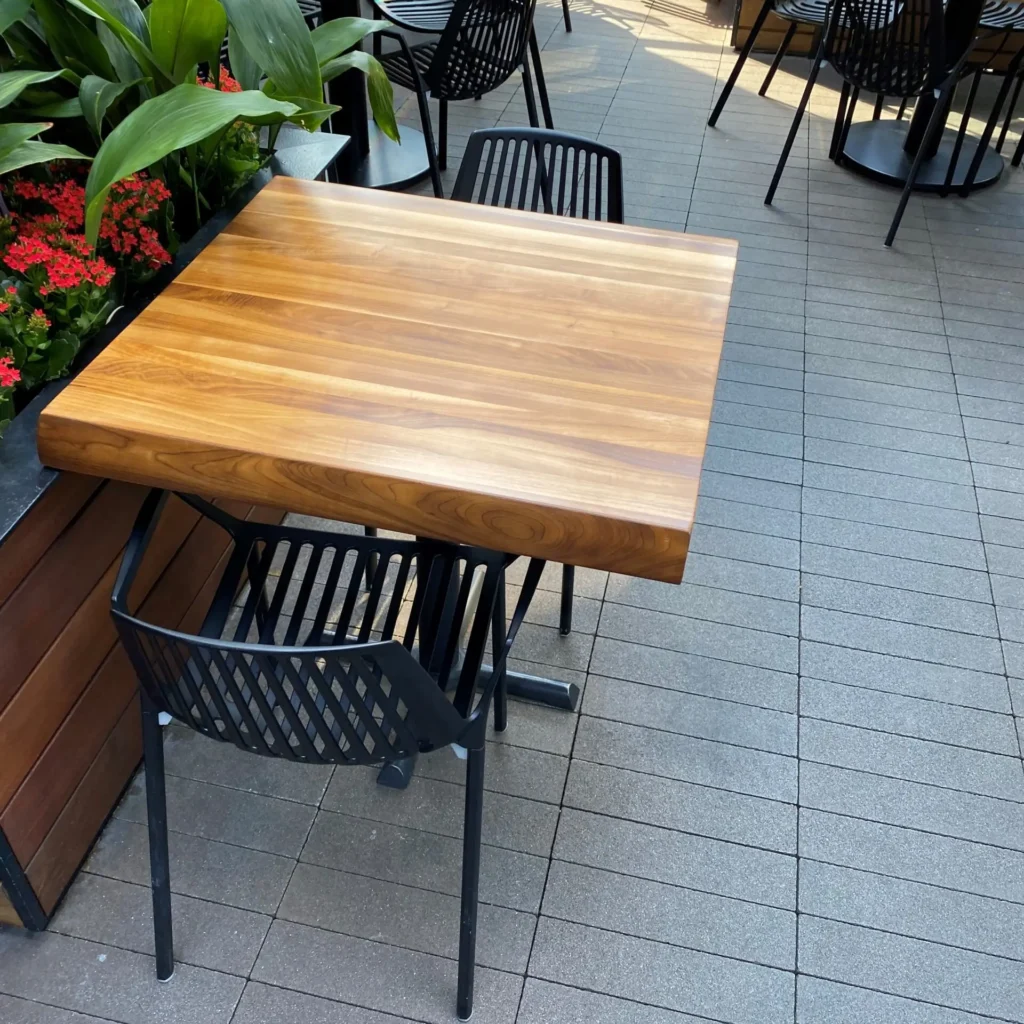
Outdoor Patio Chairs: If your restaurant has outdoor seating, you’ll need patio furniture that can withstand the elements. Metal and weather-resistant synthetic materials like wicker or plastic are ideal for restaurant-grade chairs in outdoor settings.
5. Cost: Balancing Budget and Quality
While budget is always a consideration, it’s essential to think of your restaurant chair purchase as a long-term investment. High-quality commercial-grade chairs may have a higher upfront cost, but they will last longer and require fewer repairs or replacements over time. Consider the cost per year of use when comparing your options and remember that well-made chairs can elevate the dining experience, potentially increasing customer satisfaction and loyalty.
[RELATED BLOG: Why Invest in Quality Furniture?]
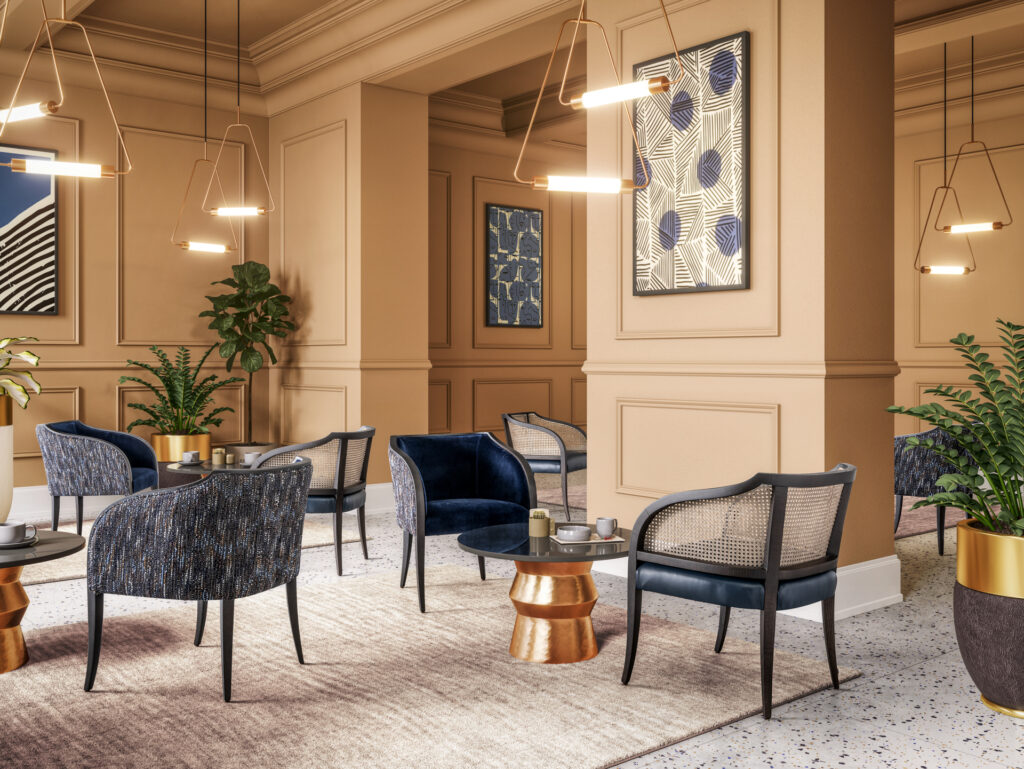
Final Thoughts: Making the Right Choice
Choosing the best restaurant chair for your business involves balancing style, durability, comfort, and cost. By focusing on restaurant-grade and commercial-grade options, you can ensure that your seating will stand up to the daily demands of your establishment, while also enhancing the overall experience for your guests.
From metal to wood, classic to modern, the options are vast, but the key is to select a chair that reflects your restaurant’s unique identity while providing a comfortable and inviting environment. Let this Restaurant Chairs Buying Guide serve as your roadmap to making the right decision. Now that you understand the importance of quality, comfort, and design, you’re well on your way to creating a dining space that not only looks fantastic but functions efficiently and delights your patrons. Contact us to start your project today.
